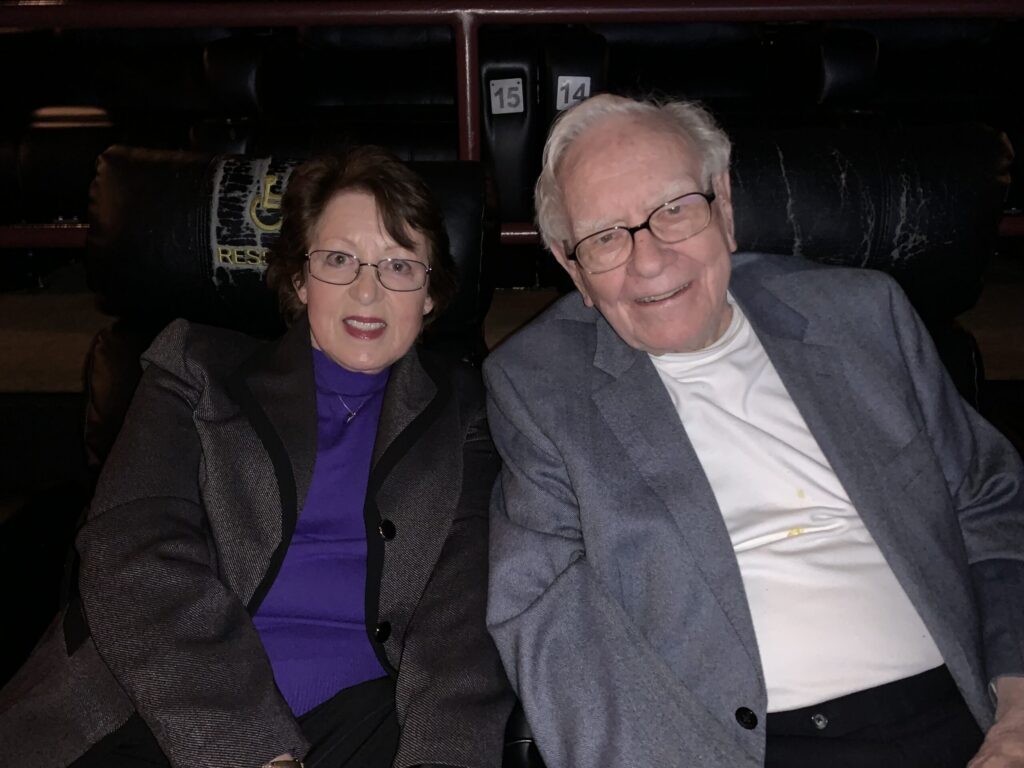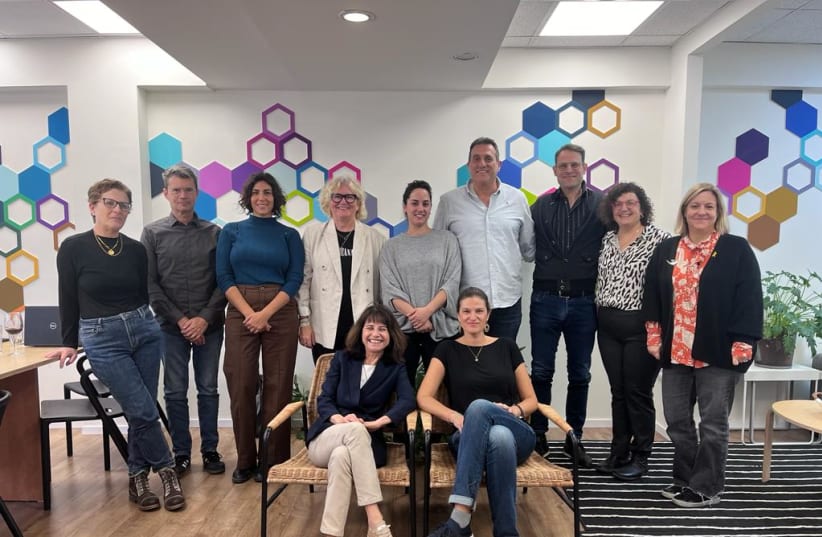
Drylands, Deserts and Desertification
Drylands, Deserts and Desertification
December 23, 2008
They found it hard, indeed almost impossible, to keep from dancing to the gospel version of the Israeli song “You and Me Will Change the World,” belted out by the local Black Hebrews band.
It was midway through the four-day conference focused on desertification and nearly all of the 350 participants could feel the vibe. Large swaths of the world were turning fast into deserts, but here in Sde Boker, at least, there was a sense among the experts and officials, gathered from over 50 countries, that something could be done, that techniques could be learned and that they would leave Israel better equipped to combat this global threat.
“It’s lovely and commendable that you are bringing folks from around the world to learn from your experiences and innovations,” said Brendan Nolan, a ruddy Irishman who has been spending the past five years combating desertification in Chad, Africa.
“I’ve heard of Israel’s expertise, but never seen it. It’s like having a beacon, yet keeping it under your coat. You need to take it out and shine the way for all of us.”
For the participants of the Ben-Gurion University of the Negev’s conference on “Drylands, Deserts and Desertification”, it was a golden opportunity not only to network, exchange ideas, but to see how Israel has been one of the leaders in stemming the spread of deserts and creating sustainable development there.
For four days this December, Israel hosted possibly the largest ever academic forum on desertification. Held at the Jacob Blaustein Institutes for Desert Research (BIDR) on the University’s Sde Boker campus, deep in the Negev, this living laboratory gathered the latest research on the issue.
And the news wasn’t good. The message coming from the experts was: The world is turning into a desert; nobody cares and if nothing is done we will all starve and go to war over food and water.
Yes, the research says that some 40 percent of the earth is already classified as drylands or undergoing desertification. And yes, some say this is threatening about one-third of the Earth’s population – about two billion people. Yet something can be done. Guests learned about how Israeli technology is at the forefront of these efforts to combat encroaching desertification, while encouraging sustainable living in dryland environments for the benefit of local populations.
“The challenge of desertification is one that has not yet been met. There are technical solutions to prevent soil degradation. We are collecting the experts to think together. They come from around the world to learn from us. We are to be the light unto the nations, but let’s do it without thinking of the commercial advantage,” said conference organizer Prof. Alon Tal, a professor of environmental policy at BGU.
The conference was held under the auspices of UNESCO with the support of the Israeli Ministry of Foreign Affairs and others. UNESCO representative Thomas Schaaf praised Israel’s lead in developing solutions for desert living. “Israeli scientists are probably among the leading experts when it comes to management of desertification,” Schaaf told the opening plenum.
Prof. James Reynolds, a world expert on desertification from Duke University and a featured speaker, raised the idea that the term desertification has been given a negative connotation and went on to say that the challenge was mainly to cope with creating a sustainable existence on drylands.
“It is essential that rural people are not seen as the problem or the victims, but instead as part of the eco system,” Reynolds said. “We are determined to emphasize the positive. Historically the negative images of ‘woe is me’ dominate the literature.”
Keeping that thought in mind, Reynolds, who advocated proper farm management in drylands, then gave a rare negative critique of the cereal quinoa, which has come to be known as the “super food from the Andes.” He shared his research that showed how farmers in Southern Bolivia – anxious to take advantage of the quinoa food fad – have introduced tractors to their fields. This has resulted in the over farming of the land, resulting in soil erosion while destroying their traditional culture.
“There’s tremendous local knowledge among the native people who live there that needs to be taken advantage of,” Reynolds said. “Then, mixed with some good solid science, there are many opportunities to improve these lands so they won’t be degraded in the future.”
Academic sessions during the conference included land restoration, vegetation and irrigation, as well as political ecology and the role of women as agents of social change in desert regions.
 The conference saw a mosaic of participants from across the world, including some 90 Africans brought by the Israeli Foreign Ministry’s MASHAV program, which brings people from developing countries to study farming management and new agriculture technologies. Other countries represented included Pakistan, China, Mongolia, Europe, the Americas, and Australia.
The conference saw a mosaic of participants from across the world, including some 90 Africans brought by the Israeli Foreign Ministry’s MASHAV program, which brings people from developing countries to study farming management and new agriculture technologies. Other countries represented included Pakistan, China, Mongolia, Europe, the Americas, and Australia.
The purpose of the conference was not just about finding and discussing scientific cures for desertification. It was also about figuring out just how to build and maintain sustainable communities in drylands. For this reason, organizers took participants out into the Negev for a first-hand look at some of Israel’s successes in confronting desertification, much of it due in part to research and technologies stemming from BGU’s Jacob Blaustein Institutes for Desert Research.
“We are anxious to see and hear from others how to cope with arid and semi-arid lands,” said Xuehu-Li, a scientist from Xian, China, explaining that half of her country fell into this category.
 While some field trips showed off desert agriculture, like fish ponds and irrigated olive groves, others witnessed the challenges of the local Bedouin, or saw solar power developments, and efforts to preserve historical sites.
While some field trips showed off desert agriculture, like fish ponds and irrigated olive groves, others witnessed the challenges of the local Bedouin, or saw solar power developments, and efforts to preserve historical sites.
Sitting in the tent of Bedouin entrepreneur Farhan Azzazme, some participants debated the benefits of eco-tourism. After visiting living examples of Israeli eco-tourism sites such as boutique desert wineries, camel ride caravans, adobe cabins, cottage industries and more, some suggested the better path to sustainable existence for the indigenous population desert conditions could be better served by mass tourism projects (i.e., casinos) instead.
“Cultural exoticism is a touristic draw,” said Suhasini Ayer-Guigan, an architect from Madras, India. “But in most developing countries eco-tourism would only be good if it could at least break even. Otherwise it only destroys cultures and reduces them to the lowest common denominator.”
David Mutekanga, a university lecturer from Mbarara, Uganda chimed in: “Most cultures will agree to close their eyes to this if they can make a profit. Perhaps mass tourism would be better for them?”
Later that night they would roll from laughter at the self-depreciating jokes of Azzat, likely one of the world’s only Bedouin stand-up comics, a living example of eco-tourism in the Negev.
By the final day, there was an underlying sense of urgency in the conference and the need for stronger action, not only by the countries suffering from desertification, but by the developed world to increase its support to combat the spread of drylands.
Elizabeth David, from the secretariat of the United Nations Convention to Combat Desertification (UNCCD), agreed that the issues of bio-diversity and climate change had garnered a much higher awareness across the world. She attributed this mainly due to investments made in scientific research and the media focus.
“Desertification has traditionally been seen as a South [southern hemisphere/developing nation] issue far away so it suffered from lack of interest,” David said. “Now there is growing awareness because land is a core issue that has global consequences. If we don’t protect the land the whole world is affected.”
This had been hinted at earlier by Prof. Rattan Lal, a so-called “godfather of sequestration,” who told a packed room that the prognosis for preserving soil fertility was essential for world peace. Lal argued that soil quality was the anchor for keeping world woes at bay and therefore the soil needed to be replenished with carbons.
“Soil is like a bank; you can’t get more than what you put into it,” he lamented. He estimated that there would be 10 billion humans on earth by the end of the century and if soils are not restored, conflict would erupt.
On this theme, a closed round-table discussion was held between Jordanian and Israeli participants who raised to the fore areas of cooperation, but also difficulties encountered along the way.
Mansour Abu Rashid, a retired general from the Royal Jordanian Army, who now heads the Amman Center for Peace and Development, revealed some of the stigmas Jordanians face when they are seen forging ties with Israelis. He said that often government officials – even though the two countries signed a peace treaty in 1994 – refuse to recognize degrees earned by Jordanian students in Israeli institutes. “The [Jordanian] students here are courageous and true believers in peace,” Rashid said.
Osama Suliman, one of the dozen Jordanian graduate students currently studying at the BIDR, modestly shrugged off the compliment. “When you believe in peace, when you have a vision that you can change things, you go ahead despite the frustrations,” said Suliman, who is involved in a solar energy project between Israel and Jordan in the Arava.
This small incident illustrates the complexities involved in confronting desertification and while a major conference like this can gather participants from across the globe, enormous perseverance is needed for Israel to facilitate environmental cooperation with its own neighbors.
“Israeli innovation is driven by necessity and circumstances. We are a small country surrounded by a hostile environment. Fortunately, Israel has a lot of experience in drylands development. We may have made a lot of mistakes along the way, but we have learned and acquired an enormous body of knowledge,” said BIDR director Prof. Avigad Vonshak, who was awarded the UNESCO Chair on Combating Desertification during the conference.
“Israel is often on the world’s agenda in a negative light,” Vonshak added. This conference was an excellent opportunity to show the world that while we may not be perfect we aren’t so bad either.”
The conference was twice a large as the first one held two years ago and Prof. Tal announced at the closing that its success ensured a third would be held in late 2010.



